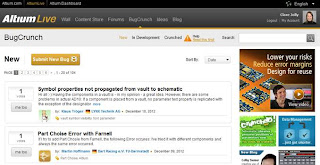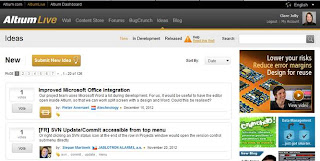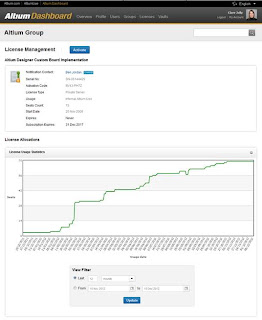At Altium we have a refreshed energy and refocus on our core technologies and as such I want a robust platform and system that supports our product development strategies.
Over the years, since the inception of AltiumLive and the introduction of BugCrunch many users have indicated that the system was cumbersome and that it should be split (at a minimum) into Bugs and Features. So we took this feedback on board and the fruits of our labour are being delivered in this update.
They say that timing is of the essence...
Coupled with my desire to have a robust community Bug and Ideas management system, about a week ago there was again a post in the Forums which alluded to some changes that member(s) of our community would like to see. In particular, were comments about our BugCrunch system and just generally turning AltiumLive into an ideas based forum.
As I mentioned, timing is of the essence because at the time that post was made, we were already in development of an Ideas based system, and improvements to Bugcrunch which were along the same lines as the enhancements suggested in the post.
There is also another notable change worth mentioning - this is the introduction of License Usage Statistics to the Dashboard.
1. Changes to BugCrunch
BugCrunch continues to be that place in our community that is designed to help you bring bugs to our attention and influence which ones get crunched first!
Based on community feedback we wanted to simplify the process that we have today and take points out of the equation. We’ve also removed the dependency of nominating and introduced a simple “me too” voting system. The process of logging a bug and submitting a “me too” vote will not require any points.

2. Introduction of Ideas
Ideas is a new section which provides you with a platform to suggest new enhancements and features as well as vote and comment on your favorite ideas. Product managers and other customers will also take part in Ideas discussions.

BugCrunch & Ideas have a number of steps:
1. New - this is where you can report a new Bug or Idea. In this section you can also tell us what you think by commenting and voting on the items you think are important or cool. Voting for an Idea will cost you 20 points.
2. In Development - is where you'll find bugs and ideas that are currently being implemented and fixed for an upcoming update. Issues or Ideas here are actively going through the development process.
3. Crunched and Released - once our development teams have delivered a fix or implemented an Idea you will see it listed in this section.
Before you create a new Bug or Idea, it is advised that you search the system to see if the item is already listed. Searching will bring up archived items that are not visible in the other lists.
Things you also need to know:
1. Use concise and specific report titles for easier searching and browsing
2. Reports with clear, detailed and reproducible steps will result in greater community engagement and support.
3. Bugs and Ideas that don’t get votes within a month of being listed will expire.
4. Altium reserves the right to reject items such as not valid or relevant, not enough information or flagged as duplicates.
5. Searching goes across both the BugCrunch and Ideas sections. Bugs and Ideas are clearly marked with Bug # or Idea # in the item title.
6. The Private setting you see when you are adding attachments to items allows you to make the attachment Private between the originator and Altium only. People outside of Altium will not be able to see the attachment.
We have made the decision to rollback points that users contributed through the nomination and voting stages. This will be done in the coming days - to all people whose bug is still open (i.e has not been developed and/or implemented).
All AltiumLive members are welcome to engage in the debates around Bugs & Ideas!
3. License Usage Statistic now available on the Dashboard
Most of you would have been users of our My Altium Account website - which managed users and licenses. We have just moved the last of the functionality from that site into the AltiumLive. You can now see your License Usage Statistics in the Dashboard. There is the ability to view the usage by any given time period - just change the date filters.
To see this information go to the Licenses tab in Dashboard and click to view the details of each of the licenses.













